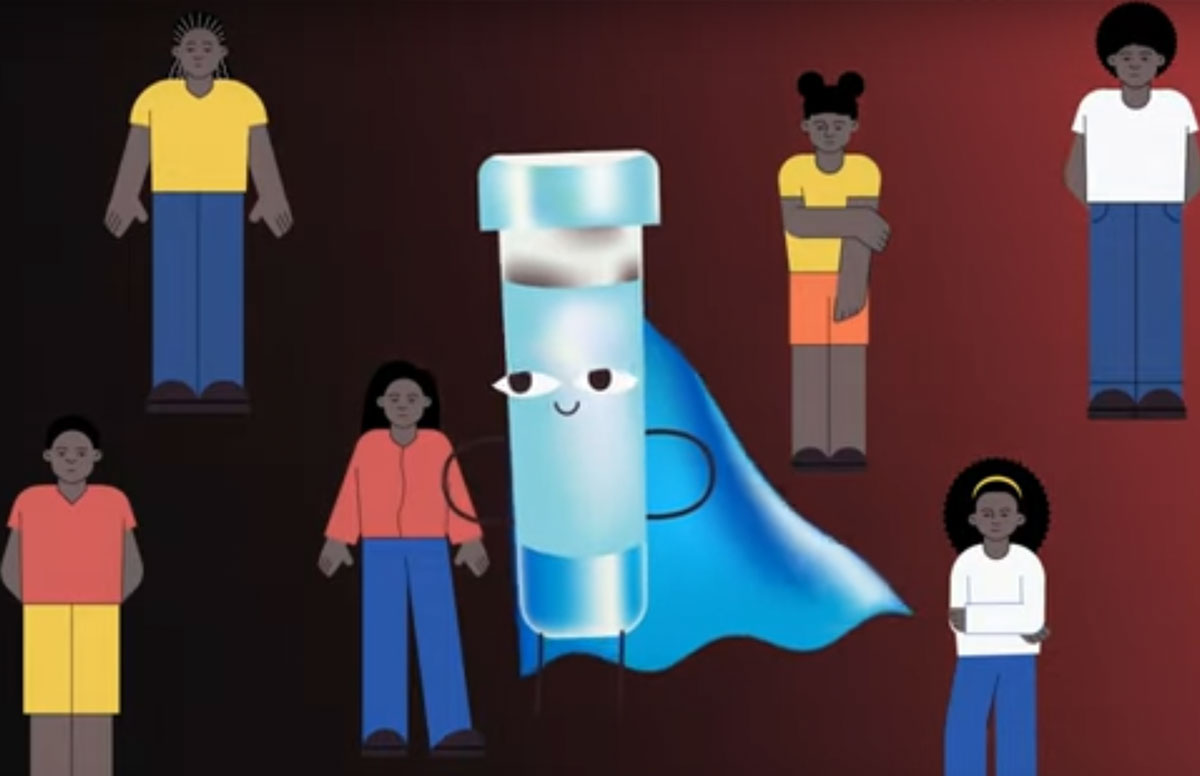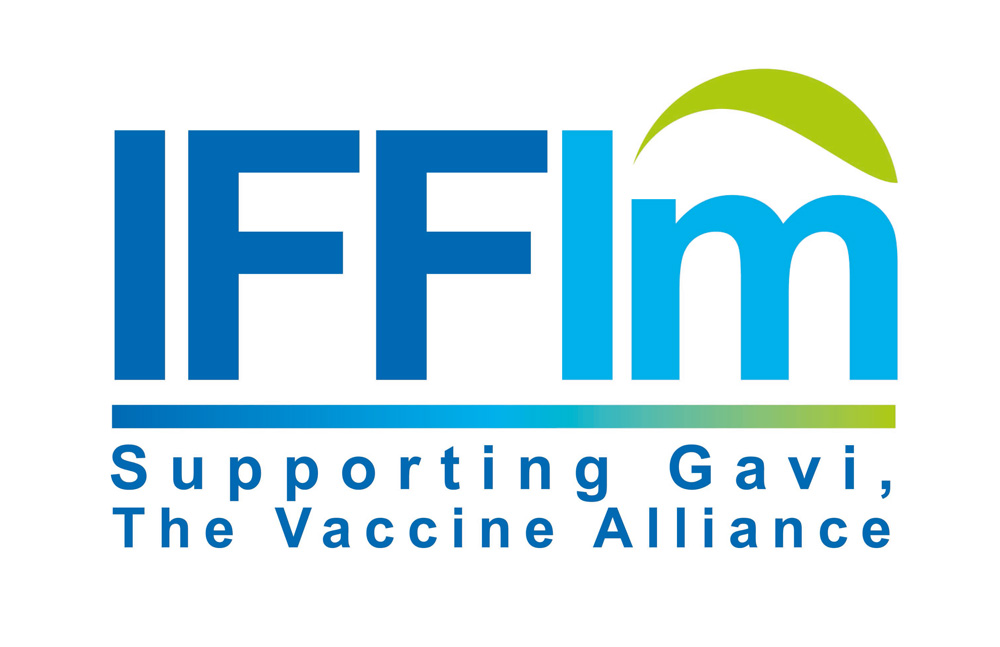How IFFIm funding helps #VaccinesWork
How IFFIm funding helps #VaccinesWork
3 April 2023

How IFFIm funding helps VaccinesWork
IFFIm supports Gavi’s mission to leave no child behind by delivering fast, flexible and predictable funding to maintain routine immunisation programmes.
IFFIm supports Gavi’s mission to leave no child behind by delivering fast, flexible and predictable funding to maintain routine immunisation programmes.
Vaccines are one of the most cost-effective health interventions in history. Since 2000, Gavi has vaccinated more than 981 million children, helping reduce child mortality by half over two decades.
Gavi’s vaccine programmes for Haemophilus influenzae type b (Hib), human papillomavirus (HPV), polio and tetanus have saved millions of lives, and work is continuing as Gavi strives to reach zero-dose children and others in low- and middle-income countries who need these vaccines. To accelerate Gavi’s work, IFFIm has disbursed billions of dollars, expanding access to these vaccines to even more children. With funds provided by IFFIm, Gavi has had a catalytic effect on increasing uptake of underused vaccines in the poorest countries.
Announcements
Hib
Before immunisation for Hib became routine in the 1970s, Haemophilus influenzae type b, or Hib, was one of the biggest killers of children under five. It affects the lining of the brain, leading to deadly conditions including meningitis, pneumonia and sepsis. Today, thanks to vaccines, the disease has been nearly eliminated in many high-income countries and significantly reduced in low-income countries. High vaccine coverage is essential to keep that threat low, especially given rising antimicrobial resistance to the antibiotics used to treat Hib infection.1
In 2005 Gavi allocated a US$ 37 million grant to increase uptake of the Hib vaccine in developing countries. Gavi also worked to vastly increase access to the pentavalent vaccine which protects against Hib and four other diseases: diphtheria, pertussis, tetanus and hepatitis B. IFFIm upfront funding for pentavalent helped strengthen Gavi’s bargaining power with vaccine manufacturers. By funding more than 90% of initial vaccines for Gavi’s pentavalent programme, IFFIm’s investment encouraged manufactures to increase production and decrease the price. Gavi is now able to procure pentavalent vaccines for US$ 0.93 per dose2, a price reduction of 60% since 2010.
IFFIm has also disbursed to Gavi US$ 62.6 million for meningitis elimination and US$ 24.1 million for Meningitis A since 2006.3
Here’s how the Hib vaccine works and why you need it
HPV
HPV, human papillomavirus, is responsible for 95% of cervical cancer, one of the deadliest forms of cancer in women. Worldwide, HPV is the seventh most common type of cancer, responsible for approximately 3.3% of cancers.4 The vast majority of cervical cancer deaths happen in low- and middle-income countries. These areas need better access to HPV vaccines which have proven highly effective in reducing cervical cancer rates by 87%.5
Gavi recently relaunched its HPV vaccine programme, committing more than US$ 600 million towards purchasing vaccines, strengthening health systems and providing technical and learning support. Gavi aims to deliver HPV vaccine to more than 86 million girls by 2025 and avert more than 1.4 million deaths from cervical cancer. So far, HPV vaccines have been introduced into national immunisation schedules in 31 Gavi-supported countries, including recent campaigns in Kyrgyzstan, Burkina Faso, Lesotho and Sierra Leone. So far, 9.8 million girls have been reached with the HPV vaccine.6
IFFIm strongly supports Gavi’s cancer-fighting HPV vaccine campaigns by providing US$ 84 million in disbursements to Gavi since 2006.
Here's more on the HPV vaccine and why we need to reach every girl
Polio
Polio terrified the world for thousands of years and left millions of people paralysed. In the 1950s the first vaccine was developed, and in 1980s the world banded together to eradicate polio through immunisation. Today, cases are rare thanks to safe, effective vaccines. Worldwide, polio cases have fallen an astounding 99.9% since 1988 — from 300,000 a year to fewer than 300. We are close to eradicating polio for good.
Yet polio is still endemic in Pakistan and Afghanistan. Moreover, there were new cases in the United States and Israel in 2022 showing the risk of polio making a comeback.7 Reaching a polio-free world through immunisation is a priority for Gavi and IFFIm.
Gavi has helped immunise more than 323 million children against polio, and all 73 Gavi-eligible countries have introduced the vaccine into their routine immunisation programmes.8 IFFIm has played a critical role in the fight to end polio by disbursing more than US$ 315 million to Gavi for its polio programmes since 2006.
IFFIm support for polio goes back to 2006 when the Global Polio Eradication Initiative (GPEI) faced a crisis and turned to IFFIm as the only way to finance stockpiling the polio vaccine for outbreaks. IFFIm invested US$ 191.3 million to help develop and license oral polio vaccine (OPV) products that could be field tested for safety and purchased in bulk. IFFIm’s support contributed to a striking 95% decline in polio cases in Nigeria and India, and an 85% decline in type 3 polio cases globally.9
As polio cases are on the rise in several countries due to a lag in routine immunisation during the pandemic, IFFIm has stepped up its support. In 2022 alone, IFFIm disbursed more than US$ 106 million for the highly effective inactivated polio vaccine (IPV).
Here’s a short history of polio and the dramatic effect of this safe, effective vaccine
Tetanus
Tetanus is relatively rare in Western countries because the tetanus vaccine is given as part of routine childhood immunisation. But it remains a problem in countries with low immunisation rates and unsanitary birth practices. Tetanus cannot be transmitted from one infected person to another, except when an unvaccinated person is pregnant, which puts the baby at risk.
Without a vaccine, up to one in five of people who encounter tetanus through cuts, burns or other wounds die. Routine immunisation saves the lives of thousands of newborns each year. The work of organisations like Gavi has widened tetanus vaccine coverage around the world, bringing the annual death toll down from more than 300,000 in 1990 to around 15,000 in 2018.10
IFFIm is proud to have disbursed US$ 61.4 million for Gavi's maternal and neonatal tetanus programme.11 In addition, IFFIm was an early supporter of the five-in-one pentavalent vaccine which protects against tetanus, diphtheria, pertussis, Hib and hepatitis B. Gavi has reached more than 661 million children with pentavalent.12 IFFIm financed more than 90% of Gavi’s promised payment to UNICEF to secure initial doses of the vaccine
Watch how the tetanus vaccine works and find out why it’s so important
2 As of 2019. Source: IFFIm Resource Guide, 2022
3 As of Sept 30, 2022. IFFIm Disbursements
4 Gavi facts and figures 2023. https://www.gavi.org/sites/default/files/programmes-impact/our-impact/Gavi-Facts-and-figures-2023.pdf
5 https://www.wcrf.org/cancer-trends/worldwide-cancer-data/
6 https://www.gavi.org/vaccineswork/hpv-vaccine-cuts-cervical-cancer-cases-nearly-90
7 Support for vaccines in Nigeria
8 Gavi facts and figures 2023. https://www.gavi.org/sites/default/files/programmes-impact/our-impact/Gavi-Facts-and-figures-2023.pdf
9 https://www.cfr.org/backgrounder/why-hasnt-world-eradicated-polio
10 As of September 2022. IFFIm disbursements
11 Gavi facts and figures 2023. https://www.gavi.org/sites/default/files/programmes-impact/our-impact/Gavi-Facts-and-figures-2023.pdf
12 https://www.gavi.org/vaccineswork/routine-vaccines/routine-vaccines-extraordinary-impact-tetanus
Share this article
Restricted Access Library
 The material in this Restricted Access Library is intended to be accessed only by persons with residence within the territory of a Member State of the European Union and is not intended to be viewed by any other persons. The material in this Restricted Access Library is provided by IFFIm for information purposes only and the materials contained herein were accurate only as of their respective dates. Certain information in the materials contained herein is not intended to be, and is not, current. IFFIm accepts no obligation to update any material contained herein.
The material in this Restricted Access Library is intended to be accessed only by persons with residence within the territory of a Member State of the European Union and is not intended to be viewed by any other persons. The material in this Restricted Access Library is provided by IFFIm for information purposes only and the materials contained herein were accurate only as of their respective dates. Certain information in the materials contained herein is not intended to be, and is not, current. IFFIm accepts no obligation to update any material contained herein.
Persons with residence outside the territory of a Member State of the European Union who have access to or consult any materials posted in this Restricted Access Library should refrain from any action in respect of the securities referred to in such materials and are otherwise required to comply with all applicable laws and regulations in their country of residence.
By clicking Access restricted content: DYNAMIC-LINK-TEXT I confirm that I have read and understood the foregoing and agree that I will be bound by the restrictions and conditions set forth on this page.
The materials in this Restricted Access Library are for distribution only to persons who are not a "retail client" within the meaning of section 761G of the Corporations Act 2001 of Australia and are also sophisticated investors, professional investors or other investors in respect of whom disclosure is not required under Part 6D.2 of the Corporations Act 2001 of Australia and, in all cases, in such circumstances as may be permitted by applicable law in any jurisdiction in which an investor may be located.
The materials in this Restricted Access Library and any documents linked from it are not for access or distribution in any jurisdiction where such access or distribution would be illegal. All of the securities referred to in this Restricted Access Library and in the linked documents have been sold and delivered. The information contained herein and therein does not constitute an offer for sale in the United States or in any other country. The securities described herein and therein have not been, and will not be, registered under the U.S. Securities Act of 1933, as amended (the "Securities Act"), and may not be offered or sold in the United States except pursuant to an exemption from, or in a transaction not subject to, the registration requirements of the Securities Act and in compliance with any applicable state securities laws.
Each person accessing the Restricted Access Library confirms that they are a person who is entitled to do so under all applicable laws, regulations and directives in all applicable jurisdictions. Neither IFFIm nor any of their directors, employees, agents or advisers accepts any liability whatsoever for any loss (including, without limitation, any liability arising from any fault or negligence on the part of IFFIm or its respective directors, employees, agents or advisers) arising from access to Restricted Access Library by any person not entitled to do so.
